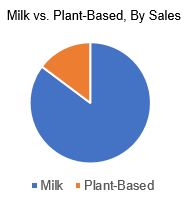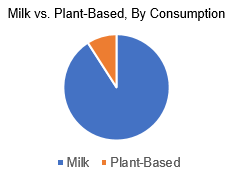They called it “Butterine,” and it was the “innovation” of its times.
But it was an imposter. Dairy fought its labeling chicanery, with outcomes that have benefited consumers ever since.
That’s why everyone should remember – and be thankful for — the Butter Act.
Sunday, Aug. 2, is the anniversary of what was officially named the Oleomargarine Act, signed by President Grover Cleveland in 1886. The product of heated Congressional debate, what became remembered as the Butter Act of 1886 created what to this day remains the only standard of identity for a food product set by Congress rather than regulators.
It was also a precursor to the food-safety system that protects U.S. consumers to this day.
Context: In 1886, the United States was living in the Wild West, literally – the Gunfight at the OK Corral had happened only five years earlier. The food arena’s Wild West was marked by an utter absence of consumer protections from sometimes-deadly food swindles. Honest dairy farmers struggled to protect their reputations from unscrupulous makers of products like “swill milk” – concoctions heavily adulterated to boost profits – and pathogen-bearing raw milk that sickened families in the days before pasteurization.
Enter margarine. Invented in France in 1869, mass production in the U.S. was quickly dominated by Chicago meatpackers (soon to be immortalized in a famous novel about their manufacturing practices — “The Jungle,” by Upton Sinclair) who saw a profitable use for previously wasted animal fat. Made cheaply and sold widely, margarine was promoted as a suitable butter substitute, even though its main similarity came from the yellow dye added to make consumers think it was a dairy equivalent.
With no restrictions on marketing claims and no legal definition of what butter was and wasn’t, animal-fat purveyors intentionally blurred the line between butter and “butterine,” sometimes attempting to pass off what dairy advocates called “bogus butter” as real. Dairy farmers worried that, over time, a lack of clear distinction would erode consumer and create a less transparent marketplace. States began passing patchworks of laws regulating, taxing and identifying oleomargarine – sometimes by requiring it to be dyed pink. But as the patchwork proliferated, a national solution was clearly needed.
Congress debated. The list of dairy’s opponents was long, including the meatpackers; industries that didn’t think the government should regulate private economic activity, interstate commerce, agriculture or public health; and newspaper naysayers who wondered why dairy didn’t simply accept “innovation” and found butter disputes faintly ridiculous. In the end, passage was overwhelming and bipartisan, with opposition mostly confined to lawmakers from southern states who argued that defining butter violated “states’ rights.”
Dairy won. And by establishing a role for the federal government in regulating food, consumers won as well — in ways that would turn out to be much more profound than the simple differences between two products.
Twenty years later, spurred on by “The Jungle” – which exposed deplorable conditions among the same meatpackers who opposed the Butter Act – Congress passed the Pure Food and Drug Act, the foundation of today’s food-safety regulation. Standards of identity that define what foods are and aren’t became accepted necessities for a fair marketplace. Product formulations became more transparent. And marketing claims that try to peddle one product by inappropriately implying it has the qualities of another were stifled by a federal government now empowered to protect consumers.
At least, when that government chooses to act. While swill milk is gone and the Wild West has been at least somewhat tamed, today’s self-styled “innovators” still try to gain an unfair marketing edge by misleading labeling implying they’re something they’re not. Think plant-based “butters” that are really nothing more than margarines at best. Think artificially concocted liquid mixtures labeled as “milks” that are nutritionally more like a high-school chemistry project than a natural, wholesome food.
With fewer dairy farmers to speak up and a better-funded opposition, the fight for integrity is tougher now than in 1886. But history teaches us the battle’s worth fighting, and the marketplace works better when there is truthful and non-misleading labeling. Are consumers better off today knowing that butter is butter and margarine is margarine? Absolutely. Did margarine find an appropriate place in the market, even though it was no longer called “butterine?” Yes, it did, despite their protestations. And did the federal government, after decades of prodding, do the right thing in protecting product integrity and requiring clear labeling? Obviously, yes again. But none of it happened without sustained, sincere effort and appropriate and effective government action.
Progress often comes via fits, false starts and setbacks. But it happens. On August 2, look in your refrigerator and remember how butter helped change the world. Be thankful for the nineteenth-century crusaders who helped ensure it’s there for you. And remember how our responses to today’s challenges will shape tomorrow’s world. Let’s celebrate the Butter Act and insist the U.S. Food and Drug Administration enforce it against today’s equivalent of yesteryear’s butter imposters.







